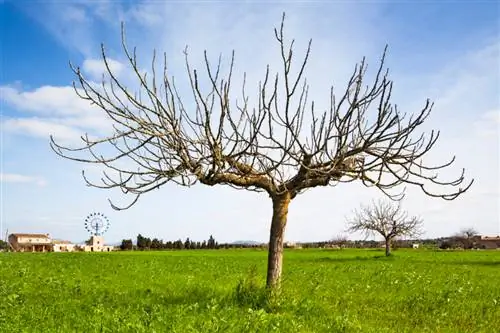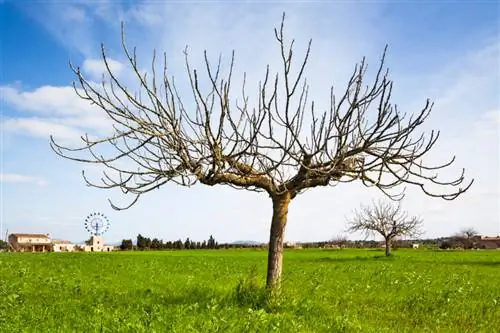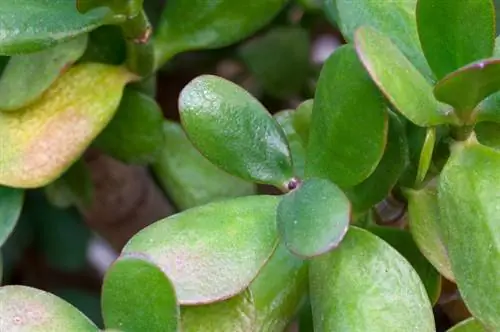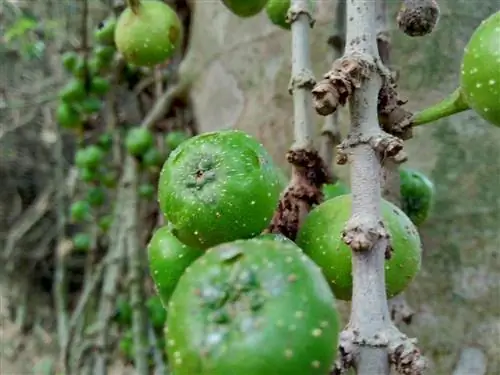- Author admin [email protected].
- Public 2023-12-16 16:46.
- Last modified 2025-06-01 06:02.
Figs are deciduous trees. If the fig loses all its leaves in autumn, this is completely normal. However, if the plant sheds its newly sprouted leaves in spring during the growth phase, this is in most cases due to care errors or plant diseases.

Why is my fig tree losing leaves?
A fig tree loses leaves due to lack of water, viral diseases, fungal infestation or lack of nutrients. To counteract this, you should water regularly, avoid waterlogging, remove affected leaves and ensure balanced fertilization.
These could be reasons for leaf loss:
- Inadequate supply of potassium
- Water shortage
- Rust mushrooms
- Fig Mosaic Virus
Lack of water leads to leaf drop
Excessive heat and lack of water also cause problems for the heat-loving fig. The plant is no longer able to supply the foliage with sufficient water, the leaves dry from the edge towards the middle and finally fall off.
Water fig trees regularly in the summer months. When it comes to outdoor figs, it has proven to be a good idea to generously flood the trees. Bucket figs need water whenever the soil feels dry. However, do not allow the root ball to dry out completely.
The trigger can be a viral disease
Many figs carry the mosaic virus. Young leaves in particular turn yellow, show deformities on the leaf lobes and subsequently fall off. Stress, triggered by wet weather conditions or excessive watering, is responsible for the outbreak of the plant disease.
Always put a drainage layer in the pot or planting hole of the fig tree and avoid waterlogging. As soon as the fig finds good growth conditions again, it forms he althy, new foliage.
Fungi as a cause of leaf loss
Rust fungi appear as small, reddish-brown and slightly raised spots on the fig leaf. The fungal mycelium runs through the entire leaf and extracts many nutrients from the fig. The leaves die and are shed.
Treat rust at the first sign and remove all affected leaves. Carefully collect fallen leaves. Dispose of the plant parts in household waste, as rust fungi survive during composting. Then spray the fig with a suitable fungicide.
Possible cause: nutrient deficiency
Rolling up the leaves from the edge of the leaf and then dropping the leaves indicates a potassium deficiency. A balanced complete fertilizer for figs must contain the nutrients sodium, phosphorus and potash in a ratio of 1 - 2 - 3.
Tips & Tricks
If the plant suffers from a lack of nutrients, you should under no circumstances increase the amount of fertilizer, as the fig initially needs its strength for regeneration. Continue to fertilize once a week during the growth phase and only change the product.






